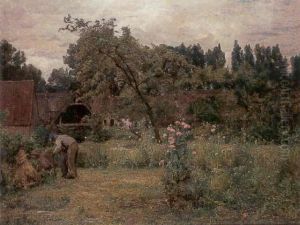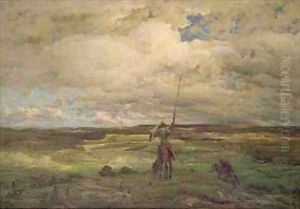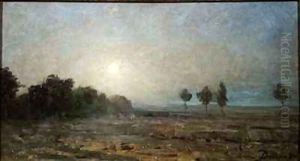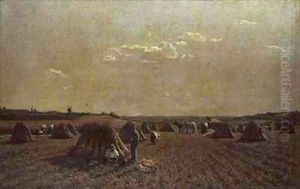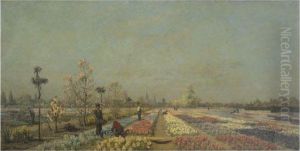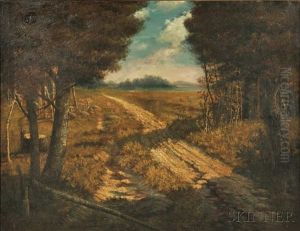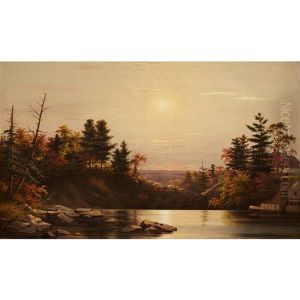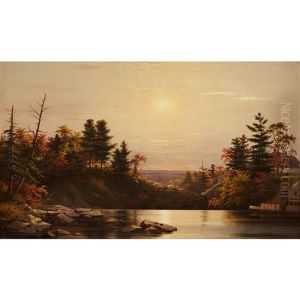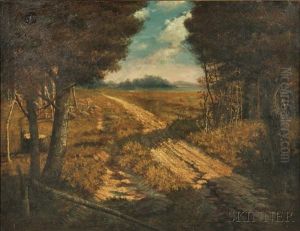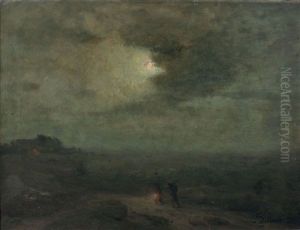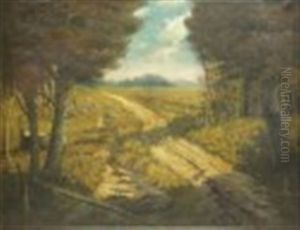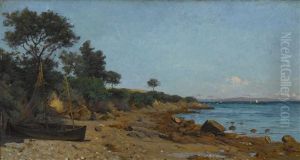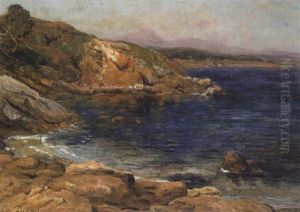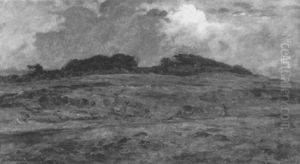Adrien Louis Demont Paintings
Adrien Louis Demont was a French painter born in Douai, in the Nord department of France, on June 15, 1851. He was primarily celebrated for his landscape paintings, which often depicted the scenic beauty of the French countryside, particularly the region of Brittany. Demont's work is characterized by its sensitive handling of light and color, which he used to capture the changing moods of the natural landscape. This sensitivity, combined with a refined technique, placed him among the notable landscape painters of his time.
Demont received his artistic training at the École des Beaux-Arts in Paris, where he was a student of the renowned French painters Émile Breton and Alexandre Cabanel. The influence of Breton, known for his romanticized landscapes, is evident in Demont's early works. However, as his style evolved, it became more aligned with the plein air painting approach, emphasizing the direct observation of nature. His marriage to Virginie Demont-Breton, a successful painter and the daughter of Jules Breton, further entrenched his connection to the artistic movement focused on depicting rural life and landscapes with authenticity and emotional depth.
Throughout his career, Adrien Louis Demont exhibited his works at various prestigious venues, including the Paris Salon, where he received several accolades for his contributions to French art. His paintings were not only celebrated in France but also garnered international recognition, contributing to the spread of French landscape painting techniques and sensibilities across Europe.
Demont's legacy is not solely limited to his contributions to landscape painting. He also played a significant role in the artistic community, particularly in the region of Wissant in Brittany, where he and his wife established a colony for artists. This colony became a hub for painters, sculptors, and writers, fostering a vibrant exchange of ideas and influencing the development of early 20th-century French art.
Adrien Louis Demont passed away on August 1, 1928, in Paris. Today, his work is preserved in several museums and galleries around the world, where it continues to be admired for its lyrical beauty and its evocative portrayal of the French countryside. Through his paintings, Demont captured the transient moments of nature, leaving behind a timeless testament to the beauty of the rural landscapes that inspired him.
